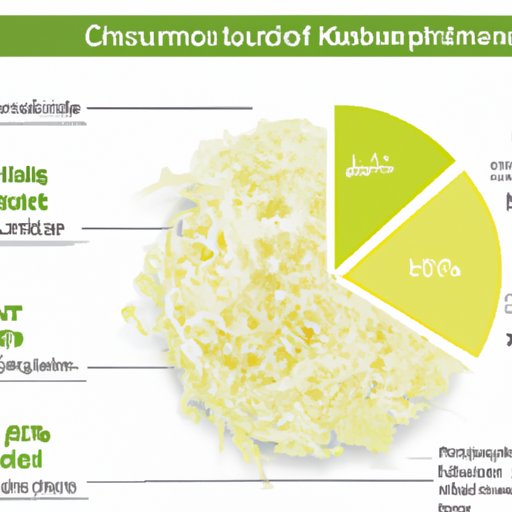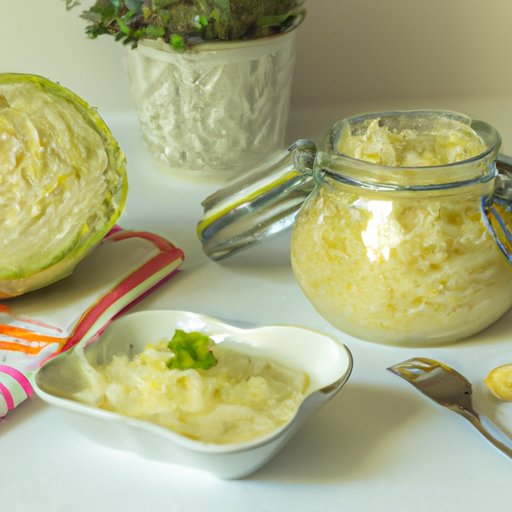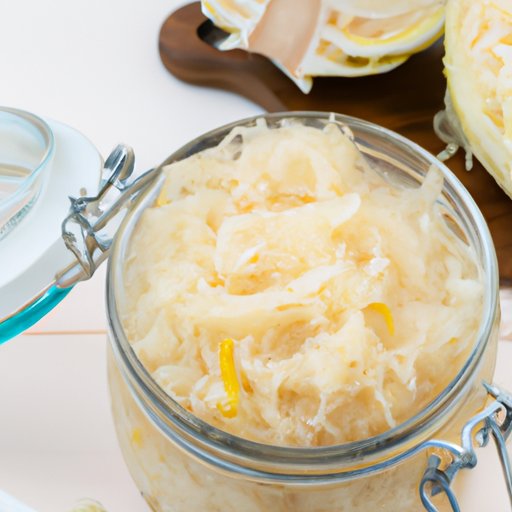Introduction
Sauerkraut is a type of fermented cabbage that has been used for centuries. It’s a popular condiment in many parts of the world, especially in Germany, where it originated. In addition to being delicious, sauerkraut is also full of beneficial nutrients and may offer a variety of health benefits. This article will explore the potential health benefits of sauerkraut, its nutritional profile, and how to incorporate it into your diet.
Exploring the Health Benefits of Sauerkraut
Consuming sauerkraut may offer a variety of health benefits. Studies have shown that it can help improve digestion, boost the immune system, and even aid in weight management. Let’s take a closer look at some of the potential benefits of eating sauerkraut.
Improved Digestion
Sauerkraut is high in fiber, which helps to keep your digestive system running smoothly. Fiber helps to move food through your digestive tract more quickly and can help reduce constipation. Sauerkraut is also a good source of probiotics, which are beneficial bacteria that help to keep your gut healthy. According to a recent study, consuming probiotics can help to reduce bloating and other symptoms of irritable bowel syndrome (IBS).
Weight Management
Sauerkraut is low in calories and high in fiber, making it an ideal food for those looking to lose weight. The fiber in sauerkraut helps to keep you feeling fuller longer, so you’re less likely to overindulge in unhealthy snacks or overeat. Additionally, studies have found that consuming probiotics can help to reduce body fat and waist circumference.
Immune System Support
Sauerkraut is rich in vitamins and minerals, including vitamin C, which is essential for a healthy immune system. Vitamin C helps to protect your body from infection and disease by boosting your immunity. Sauerkraut is also a good source of zinc, another important nutrient for a strong immune system. Zinc helps to regulate the activity of white blood cells, which are responsible for fighting off infections and illnesses.

The Nutritional Profile of Sauerkraut
In addition to its potential health benefits, sauerkraut is also an excellent source of essential vitamins and minerals. A 100-gram serving of sauerkraut contains:
- Carbohydrates: 7 grams
- Fiber: 2 grams
- Protein: 1 gram
- Vitamin C: 18% of the RDI
- Vitamin K: 14% of the RDI
- Manganese: 10% of the RDI
- Iron: 8% of the RDI
- Potassium: 5% of the RDI
- Magnesium: 4% of the RDI
Sauerkraut is also a good source of calcium, phosphorus, and B vitamins.
Is Sauerkraut Good for Your Gut?
As mentioned earlier, sauerkraut is a good source of probiotics, which are beneficial bacteria that help to keep your gut healthy. Probiotics can help to restore the balance of bacteria in your gut, which can help to improve digestion and reduce inflammation. Consuming probiotics can also help to reduce symptoms of IBS and other digestive disorders.

How to Incorporate Sauerkraut into Your Diet
Sauerkraut is a versatile ingredient that can be used in a variety of dishes. It can be eaten as is, added to salads, sandwiches, and wraps, or used as a topping for burgers, hot dogs, and other proteins. You can also use sauerkraut to make soups, sauces, and stews. To get the most health benefits out of sauerkraut, try to eat it raw or lightly cooked. Raw sauerkraut is higher in probiotics, while cooked sauerkraut still provides valuable vitamins and minerals.
What Foods Go Well with Sauerkraut?
Sauerkraut pairs well with many different foods. It goes especially well with pork, beef, potatoes, and root vegetables. Sauerkraut is also a great addition to egg dishes, such as omelets and frittatas. For a quick and easy meal, try adding sauerkraut to a grilled cheese sandwich or a quesadilla.

The History and Origin of Sauerkraut
Sauerkraut dates back centuries, with its origins in Germany. It was originally made by fermenting shredded cabbage in salt water, then storing it in barrels. This method of preservation allowed the sauerkraut to last for months, providing valuable nutrition during the winter months. Today, sauerkraut is still popular in Germany and many other parts of the world.
DIY Sauerkraut: Making Your Own at Home
Making your own sauerkraut at home is easier than you might think. All you need is some cabbage, salt, and a jar. Start by shredding the cabbage and combining it with the salt in a large bowl. Massage the mixture for a few minutes until the cabbage begins to release its liquid. Transfer the mixture to a jar and press down firmly until the liquid covers the cabbage. Cover the jar with a lid and let it sit at room temperature for five days before transferring it to the refrigerator.
Conclusion
Sauerkraut is a nutritious and versatile food that has been around for centuries. It’s a good source of fiber, vitamins, and minerals, and may provide a variety of health benefits, including improved digestion, weight management, and immune system support. Sauerkraut is also easy to make at home, so you can enjoy the health benefits without having to buy it in the store. Whether you eat it raw or cooked, sauerkraut is a tasty and nutritious way to add flavor to your meals.
(Note: Is this article not meeting your expectations? Do you have knowledge or insights to share? Unlock new opportunities and expand your reach by joining our authors team. Click Registration to join us and share your expertise with our readers.)
